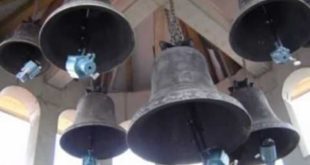By NMHC
As English-language publications slowly and sporadically spread across the West, with printing presses popping up in mining towns and along the pioneer trails, there already was a well-established Hispano literary tradition with a long history in New Mexico and the greater Southwest.
That tradition will be the subject of Ancestor Words: The Spanish-Language Press in New Mexico, a panel discussion to be held at 6 p.m. Wednesday, Oct. 10, at the Thomas C. Donnelly Library on the New Mexico Highlands University campus in Las Vegas, NM. The event is free and open to the public.
New Mexico’s first printing press was acquired in 1834 by Padre Antonio José Martinez, a priest, progressive thinker, educator and community leader who lived from 1793 to 1867. He was instrumental in producing numerous educational publications as well as New Mexico’s first newspaper, El Crespusculo de la Libertad (The Dawn of Liberty).
Padre Martinez’s El Crepusculo led to the establishment of more than a hundred Spanish-language newspapers in the Territorial period following the American conquest. Nuevomexicano presses were essential in preserving cultural identity and survival. One leading newspaper in Las Vegas, New Mexico, La Voz del Pueblo (The Voice of the People) bought by Felix Martinez, who is considered the father of Highlands University, transformed La Voz into an influential newspaper and advocate for the rights of Spanish-speaking people for more than 37 years.
A moderated discussion on the history of Spanish-language journalism in New Mexico includes the following panelists:
* Dr. A. Gabriel Melendez, a distinguished University of New Mexico Professor and Director of the Center for Regional Studies (CRS) at UNM and author of numerous books, among them So All is Not Lost: The Practices of Print in Nuevomexicano Communities 1836-1958 and Spanish-Language Newspapers in New Mexico 1834-1958.
* Simon Romero, a national correspondent who covers immigration and other issues of the United States for The New York Times. From 2011 to 2017, he was the Time Brazil bureau chief, covering Brazil, Argentina, Chile, Paraguay and Uruguay. Born and raised in northern New Mexico, Mr. Romero graduated cum laude with a degree in history and literature from Harvard College and studied history at the University of Sᾶo Paolo. He is fluent in Spanish and Portuguese.
* Maria Elena Alvarez, a native of Las Vegas, NM, and the great-granddaughter of Ezequiel C. de Baca, editor of La Voz del Pueblo before he became New Mexico’s second governor, is a third-generation journalist. She started out as Rio Arriba County Bureau Chief for The New Mexican in Santa Fe, then became Editor of Hispanic Magazine, and in 1990 she joined the Albuquerque Journal as Arts Editor and was a member of the Journal’s Editorial Board until 2000. She owned Prime Time Monthly from 2002 to 2010. Since then, she has been a publisher, entrepreneur, and a licensed mental-health counselor.
Please join us for this free moderated discussion about the history of Spanish-language journalism in New Mexico and the role it played in supporting democracy and cultural survival in Nuevomexicano identity.
Ancestor Words: The Spanish-Language Press in New Mexico is part of the “Democracy and the Informed Citizen” initiative, administered by the Federation of State Humanities Councils. The initiative seeks to deepen the public’s knowledge and appreciation of the vital connections between democracy, the humanities, journalism and an informed citizenry.
We thank The Andrew W. Mellon Foundation for their generous support of this initiative and the Pulitzer Prizes for their partnership.
The New Mexico Humanities Council (NMHC) Seeks to understand who we are, who we were and who we aspire to be. Learn more at www.nmhum.org.
 SantaFeToday.com Santa Fe’s Hometown News
SantaFeToday.com Santa Fe’s Hometown News




